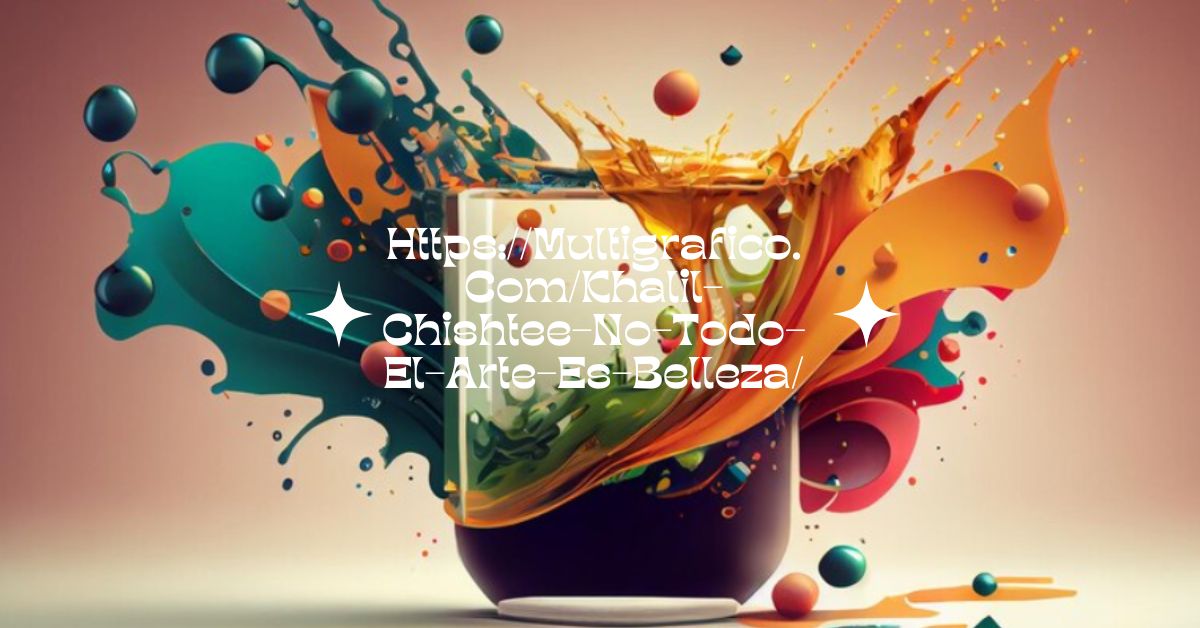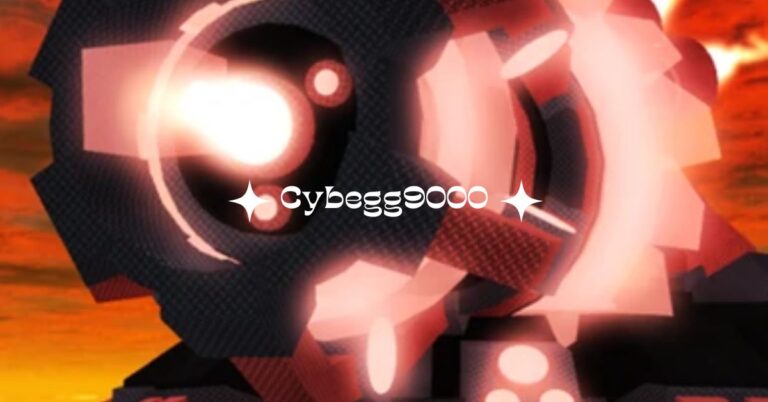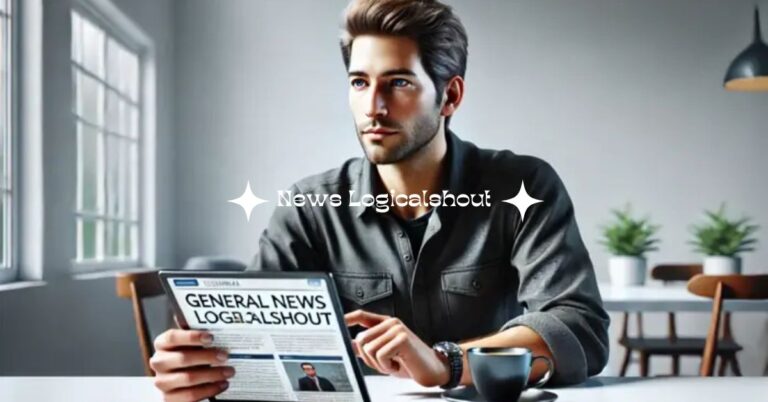Https://Multigrafico.Com/Khalil-Chishtee-No-Todo-El-Arte-Es-Belleza/ – Rethinking The Definition Of Art!
For Chishtee, the true purpose of art is not to create something beautiful but to evoke emotion and provoke thought. His work encourages viewers to engage with art on a deeper level and to reflect on the complexities of life.
Https://Multigrafico.Com/Khalil-Chishtee-No-Todo-El-Arte-Es-Belleza/ is a contemporary artist . Born in Pakistan and now based in the United States, Chishtee’s work transcends cultural boundaries, incorporating elements from various traditions. His journey as an artist is marked by an exploration of identity, beauty, and societal norms.
Further explain the Https://Multigrafico.Com/Khalil-Chishtee-No-Todo-El-Arte-Es-Belleza/ sculptures challenge traditional notions of beauty, inviting us to question what truly defines art.
Who Is Khalil Chishtee?
Https://Multigrafico.Com/Khalil-Chishtee-No-Todo-El-Arte-Es-Belleza/ is a renowned Pakistani visual artist based in New York City. Known for his thought-provoking and often controversial sculptures, Chishtee challenges traditional notions of beauty and uses art as a platform for social commentary.
Born in Lahore, Pakistan, Chishtee studied sculpture at the National College of Arts. He is particularly recognized for his use of unconventional materials, such as plastic bags, which he manipulates into haunting and evocative figures. His work often addresses issues like environmental concerns, consumerism, and the human condition.
Https://Multigrafico.Com/Khalil-Chishtee-No-Todo-El-Arte-Es-Belleza/ have been exhibited internationally and have garnered critical acclaim. His art is known for its ability to provoke thought and spark conversations about important social and cultural issues.
Why Is Plastic A Key Material In Chishtee’s Sculptures?
1. Environmental Commentary:
Chishtee’s use of plastic is a direct commentary on the pervasive issue of plastic pollution. By incorporating discarded plastic bags into his art, he highlights the environmental impact and the urgency of addressing this global problem.
2. Social and Political Critique:
Chishtee often uses plastic to represent the malleability of identity and the constant transformations individuals undergo in response to societal pressures. The way plastic can be reshaped and molded mirrors the fluidity of human identity.
3. Artistic Expression and Technique:
Plastic offers a versatile medium that can be manipulated in various ways. Chishtee’s sculptures demonstrate his mastery of the material, as he creates intricate forms and textures using simple plastic bags.
How Does Chishtee Challenge Traditional Ideas Of Beauty In Art?
Https://Multigrafico.Com/Khalil-Chishtee-No-Todo-El-Arte-Es-Belleza/ challenges traditional ideas of beauty in art through several key strategies:
1. Material Choice:
His use of recycled plastic bags, a material often seen as mundane or even unsightly, subverts the expectation of art being made from more precious or aesthetically pleasing materials.
2. Subject Matter:
Chishtee’s sculptures Https://Multigrafico.Com/Khalil-Chishtee-No-Todo-El-Arte-Es-Belleza/ often depict social and political issues, such as poverty, inequality, and environmental degradation. These subjects are not typically associated with traditional notions of beauty.
3. Form and Composition:
While his sculptures can be visually striking, they often lack the symmetry, balance, and harmony that are traditionally considered hallmarks of beautiful art. Instead, they may be asymmetrical, chaotic, or even grotesque.
4. Cultural Context:
Chishtee’s work is rooted in Pakistani culture and traditions, drawing inspiration from local folklore, history, and religious beliefs. This cultural context can challenge Western notions of beauty, which are often based on European aesthetics.
5. Emotional Impact:
Chishtee’s sculptures often evoke strong emotions, such as sadness, anger, or despair. This emotional impact can be seen as a form of beauty in itself, as it challenges the viewer’s preconceived notions and forces them to confront difficult truths.
By challenging traditional ideas of beauty, Chishtee expands our understanding of what art can be and how it can affect us. His work reminds us that beauty is subjective and can be found in unexpected places.
What Are Some Reactions To Chishtee’s Art?
Https://Multigrafico.Com/Khalil-Chishtee-No-Todo-El-Arte-Es-Belleza/ and thought-provoking sculptures have garnered a wide range of reactions from viewers and critics. Some common themes in these responses include:
Environmental Commentary:
Many viewers appreciate Chishtee’s work as a powerful commentary on environmental issues, particularly plastic pollution. His use of plastic bags as a medium serves as a visual metaphor for the ubiquity and harmful effects of plastic waste.
Social and Political Themes:
Chishtee’s sculptures often touch on social and political issues, such as consumerism, globalization, and displacement. His work can be seen as a critique of the modern world and its impact on individuals and communities.
Aesthetic Appeal:
Beyond their social and political significance, Chishtee’s sculptures are also admired for their aesthetic beauty and craftsmanship. His ability to transform seemingly mundane materials into works of art is a testament to his skill and creativity.
Emotional Impact:
Chishtee’s work can evoke a range of emotions in viewers, from sadness and anger to hope and inspiration. The haunting beauty of his sculptures can leave a lasting impression.
Has Chishtee’s Work Influenced Other Artists?
Yes, Khalil Chishtee’s work has undoubtedly influenced other artists. His innovative use of plastic bags as a sculptural medium has inspired many to explore new materials and techniques. Additionally, his ability to combine aesthetics with social and political commentary has encouraged other artists to address important issues in their work.
While it may be difficult to pinpoint the exact extent of Chishtee’s influence, it is clear that his work has played a significant role in shaping contemporary art discourse. Https://Multigrafico.Com/Khalil-Chishtee-No-Todo-El-Arte-Es-Belleza/ legacy will continue to inspire future generations of artists to push the boundaries of their craft and use their art as a tool for social change.
What Is The Significance Of Plastic In Khalil Chishtee’s Art?
Environmental Commentary:
As a ubiquitous material in modern life, plastic represents the pervasive impact of human consumption on the environment. Https://Multigrafico.Com/Khalil-Chishtee-No-Todo-El-Arte-Es-Belleza/ use of discarded plastic bags highlights the problem of pollution and the need for sustainable practices.
Human Fragility:
The translucent and often delicate nature of plastic can be seen as a metaphor for the fragility of human life. Chishtee’s sculptures often depict figures that are vulnerable or in distress, emphasizing the transitory and ephemeral nature of existence.
Social Commentary:
Plastic can also be interpreted as a symbol of consumer culture and the superficiality of modern life. By using this material to create works of art, Chishtee challenges our assumptions about value and beauty.
Spiritual and Philosophical Themes:
In some of Chishtee’s works, plastic can be seen as a representation of the human body or soul. The transformation of discarded material into works of art can be interpreted as a spiritual allegory, suggesting the possibility of redemption or rebirth.
What Is The Impact Of Khalil Chishtee’s Art On Society And Culture?
Environmental Awareness:
By transforming discarded plastic bags into haunting yet beautiful sculptures, Chishtee highlights the pervasive problem of plastic pollution. His work serves as a stark reminder of the environmental consequences of our consumer habits.
Social Commentary:
Chishtee’s sculptures often delve into deeper social issues, such as identity, mortality, and the fleeting nature of human existence. His work encourages viewers to reflect on their own place in the world and the challenges we face as a society.
Artistic Innovation:
Chishtee’s unconventional choice of material has pushed the boundaries of traditional sculpture. His work demonstrates that art can be created from everyday objects, challenging conventional notions of what constitutes “fine art.”
Cultural Dialogue:
Chishtee’s art has been exhibited internationally, fostering cultural exchange and sparking conversations about global issues.Https://Multigrafico.Com/Khalil-Chishtee-No-Todo-El-Arte-Es-Belleza/ work has helped to bridge cultural divides and promote understanding.
FAQs:
1. What is the inspiration behind Khalil Chishtee’s sculptures?
Https://Multigrafico.Com/Khalil-Chishtee-No-Todo-El-Arte-Es-Belleza/ draws inspiration from a variety of sources, including personal experiences, social issues, and cultural heritage. His sculptures often reflect his observations of the world around him, and he aims to provoke thought and discussion through his work.
2. How does Chishtee’s art reflect the social and political issues of Pakistan?
Https://Multigrafico.Com/Khalil-Chishtee-No-Todo-El-Arte-Es-Belleza/ often addresses social and political issues in Pakistan, such as poverty, inequality, and religious extremism. He uses his sculptures to raise awareness of these issues and to challenge societal norms.
3. What materials does Khalil Chishtee primarily use in his sculptures?
Chishtee is known for his use of unconventional materials, such as plastic, found objects, and recycled materials. He often incorporates these materials into his sculptures to create thought-provoking and visually striking pieces.
4. How has Khalil Chishtee’s artistic style evolved over time?
Https://Multigrafico.Com/Khalil-Chishtee-No-Todo-El-Arte-Es-Belleza/ has evolved over the years, reflecting his changing perspectives and experiences. While he has always been known for his use of unconventional materials, his work has become increasingly abstract and thought-provoking in recent years.
5. What is the significance of Chishtee’s use of everyday objects in his sculptures?
Https://Multigrafico.Com/Khalil-Chishtee-No-Todo-El-Arte-Es-Belleza/ use of everyday objects in his sculptures is a deliberate choice that reflects his belief in the beauty and significance of ordinary things. By incorporating these objects into his art, he challenges traditional notions of beauty and value.
Conclusion:
Https://Multigrafico.Com/Khalil-Chishtee-No-Todo-El-Arte-Es-Belleza/ In conclusion, Khalil Chishtee’s art is a powerful reminder that beauty can be found in unexpected places, and that art has the potential to be much more than just something pleasing to the eye.
By using unconventional materials and challenging traditional notions of beauty, Chishtee compels us to confront important social and environmental issues, and to think critically about the world around us. His work is a testament to the transformative power of art, and his legacy will continue to inspire future generations of artists and viewers alike.





